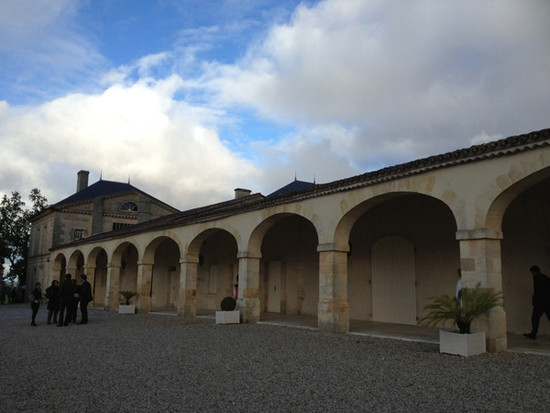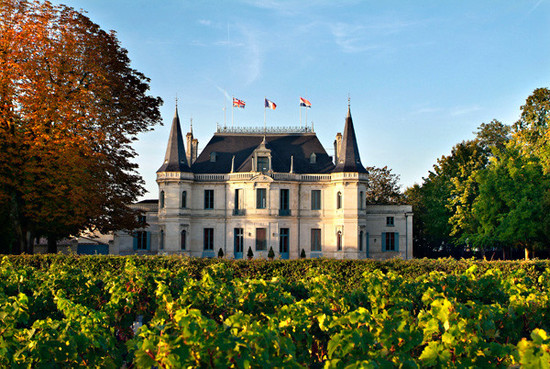Each January, a wine-tasting Supreme Court sits in the immaculate Suffolk seaside town of Southwold to pass judgment on a single, four-year-old Bordeaux vintage (the latest to be physically released on to the market). I have taken part once in this event, though so long ago that a number of my fellow-tasters on that occasion now dispute the angel’s share.
Current tasters include many friends whose palates I hold in high regard, including writers Jancis Robinson, Steven Spurrier and Neal Martin; merchants Stephen Browett, Barry Phillips and Alex Hunt; and former broker Bill Blatch.
The latest tasting, as reported by Jancis Robinson in her Financial Times column of February 13th 2016, was of the 2012 vintage, but what particularly caught my eye was the group ranking of the 13 red-Bordeaux vintages between 2000 and 2012 which concluded the article (voting this hit parade is an annual ritual).

I’m not referring to the tussle for first place between 2005, 2009 and 2010 (the group has it in that order): a delicious exercise in subjectivity with many decades left to run. What shocked me was the vintage in last place: 2011, described in the article as “miserable” and “lacklustre”.
I spent two happy days in September 2015 tasting most of the top red Bordeaux 2011s (though not, alas, the First Growths, Petrus, Cheval Blanc and Ausone). To position this vintage as worse than the skinny-latte 2002s, the charmless 2004s and the sometimes weak-kneed 2007s, and to hang adjectives like “miserable” around its neck, seems to me a miscarriage of justice. Personally, I like 2011 more than the sometimes tight-lipped and over-serious 2008s, and at least as much as the enjoyable, laid-back, gutsy 2006s (a vintage with which it has much in common), and I think it compares favourably with 2002, 2004 and 2007.
The best 2011s are classic, generously constructed, well-built and enduring wines of true gastronomic potential which I would love to own and to cellar, and which I believe will prove popular with the legions of experienced red Bordeaux lovers who still throng the world’s fine-wine market, provided they give them at least a decade or so’s cellar ripening before sitting down to dinner with them.
I honestly do not understand why my learned friends have knocked 2011 down to the ground and are kicking the hell out of it.
Its en primeur pricing was wrong, admittedly, but that is a separate issue which the market has now corrected to the great discomfort of Bordeaux négociants (kick the château-owners for this, by all means, but not the wines). It’s not an easy vintage to taste just now because of its generally tannic style, but tasters are of no use whatsoever unless they are prepared to act as surrogate drinkers, and tannins work in a very different manner when you drink a red wine with roast beef and Yorkshire pud to the way in which you might taste them in isolation shortly after breakfast in a seaside town in winter. (My friends of course all know this.)
2011 is inconsistent, too, the biggest viticultural problem being one of mixed ripeness, even within the same bunch. It was a profoundly Atlantic summer, meaning a dose of almost every conceivable weather condition at some point or other, and with a threatening, moist end. Not ideal conditions for those who didn’t want to bother with all that new-fangled sorting; and it should also be said that it’s a vintage which favours the best sites.
But for those with the resources and the will to sort fastidiously, which means the vast majority of serious producers today, there was ample but not exaggerated sugar ripeness by the time the early harvest got under way in early September. It was a warm summer overall, like all of the greatest Bordeaux vintages (and unlike 2002, 2004 and 2007).
The real peculiarity of the vintage was that tannic wealth and amplitude seemed to get ahead of sugar ripeness, and the extent to which you gave the tannins access to the wine in vinification required great sagacity. No set of palates anywhere in the world understands tannins better than Bordelais palates, though, and I think that many cases those overseeing the extractions and macerations judged them correctly. Don’t worry about the tannins; just give them time. Fine tannic red wine with the ability to modulate with age is still a rarity, even in today’s vastly expanded wine world. It’s a precious part of the appeal of red Bordeaux.

After that, the only question concerns me is fruit ripeness. You can see green tones and a trace of kerosene in some wines, and for me they are the vintage failures. Most of the Médoc wines fetched up at around 13%, whereas I think they would probably have been better at 13.5%; that’s really why the fruit stands a little shy of the tannin at this stage, but the picking call was mostly spot-on and sorting ensured the fruit flavours are ripe.
Personally, I think it was an excellent vintage for Margaux, whose sandier soils and fine gravels mean less tannin and earlier ripening: Palmer and Rauzan-Ségla are two absolute stars of the vintage. Left-bank 2011 in general seems made for traditional, old-school drinkers who complain about high alcohols in 05, 09 and 10, but who nonetheless like ‘classic claret’. And the quality of the tannins is a world away from the brutality once evident in a vintage like 1975; Bordeaux has moved on.
Merlot being what it is, the alcohols are a little higher on the Right Bank, and there is a sense of fleshiness to the fruit which works well with the rich tannic structures, supposing that green tones have been successfully avoided. Pomerol, like Margaux and for not dissimilar reasons, seems to me more of a success than higher-altitude, cooler-soiled St Emilion, where you will find some greenness from time to time. (Cabernet Franc, though, was often very successful in St Emilion in 2011.)
Here, anyway, is a small selection of outstanding wines from this maligned year. 2011 is not a great vintage, but it’s somewhere between good and very good (and in no way miserable). I think the best red Bordeaux 2011s will last well, and provide huge pleasure when drunk at maturity, in the main during the late 2020s and 2030s, by which time I will probably be queueing up for the angel’s share myself.
Click next page to see:
Five (Almost) Affordable 2011s
Five Luxurious 2011s
Translated by Sylvia Wu / 吴嘉溦
All rights reserved by Future plc. No part of this publication may be reproduced, distributed or transmitted in any form or by any means without the prior written permission of Decanter.
Only Official Media Partners (see About us) of DecanterChina.com may republish part of the content from the site without prior permission under strict Terms & Conditions. Contact china@decanter.com to learn about how to become an Official Media Partner of DecanterChina.com.


Comments
Submit